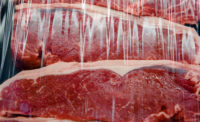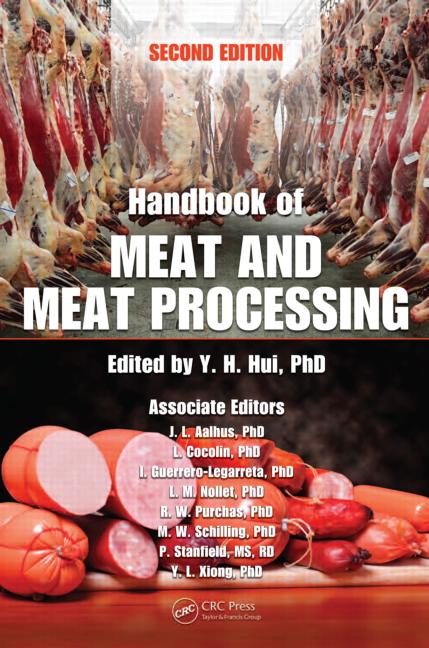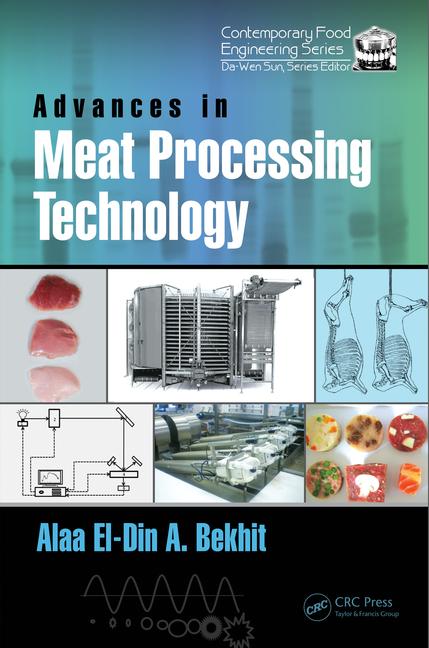Tech | Meat Science Review
Understanding metmyoglobin reduction pathways to limit meat discoloration

Figure 1: Nonenzymatic mechanism determined by Brown and Snyder (1969)
Food waste affects every American consumer. The United States wastes more than 84 million tons of edible food a year, and meat contributes 22 percent of the total food loss (Dou et al., 2016). Consumers typically prefer a bright cherry-red meat color when purchasing meat products, and discoloration has a negative impact on buying decisions, which in turn can lead to food waste.
Myoglobin is the heme protein primarily responsible for meat color. Depending on the iron valence state and the ligand attached, myoglobin occurs in three different forms: deoxymyoglobin, oxymyoglobin and metmyoglobin. Deoxymyoglobin imparts a purplish dark red while oxymyoglobin gives a bright red color. Discoloration occurs by the oxidation of deoxy-/oxymyoglobin, forming metmyoglobin and brown surface color.
Oxidation is the loss of electrons from the heme in myoglobin from Fe2+ to Fe3+ and can occur more readily in common retail settings where meat is exposed to light and oxygen (O2). However, meat has an inherent ability to reduce the brown pigment and form reduced myoglobin through metmyoglobin reducing systems such as enzymatic, non-enzymatic, and mitochondria-mediated pathways.
The non-enzymatic metmyoglobin-reducing pathway occurs when inherently present electron donors and carriers interact with metmyoglobin to form ferrous myoglobin. For example, nicotinamide adenine dinucleotide (NADH; an electron donor) and methylene blue (an electron carrier) can interact with metmyoglobin to form reduced deoxy-/oxymyoglobin, as represented in Figure 1. But limited knowledge is available on the impact of light on non-enzymatic reduction. The objective of this study was to evaluate the effect of light and dark storage conditions on non-enzymatic metmyoglobin reduction in vitro.
Solutions of ascorbate and NADH were used as the electron donors, and cytochrome c and methylene blue as the electron carriers. Equine metmyoglobin solution at pH 5.6 was combined with different electron donors and carriers in a 96-well plate. To evaluate lighting effects, the well plate was kept under LED lighting, and readings were taken every five minutes for 25 minutes using a spectrophotometer set to 582 nm. The same combinations were evaluated in dark storage with the previously mentioned method. The experiment was replicated three times, and the data were analyzed using the Mixed Procedure of SAS. There was a significant treatment ´ lighting effect on the metmyoglobin reduction. The combination of NADH and methylene blue had an increase (P < 0.0001) in metmyoglobin reduction in light conditions compared to dark storage. There were electron donor and carrier-specific effects on non-enzymatic metmyoglobin reduction. In the presence of light, NADH + methylene blue + EDTA had an increase (P < 0.0001) in metmyoglobin reduction when compared with dark storage. The metmyoglobin reduction was limited in the presence of NADH + cytochrome c in both lighting conditions compared with NADH and methylene blue. Metmyoglobin reduction was significantly higher in the presence of cytochrome c and ascorbate compared with cytochrome c and NADH for light and dark conditions. In addition, metmyoglobin reduction increased with the presence of light and the combination of ascorbate and methylene blue (P < 0.001).
In conclusion, the current in-vitro research demonstrates inherently present electron donors and carriers can contribute to non-enzymatic metmyoglobin reduction in retail light settings and meat pH. When considering the practical implications of this study, electron donors and carriers could be utilized in a post-harvest enhancement technology, which may lead to an extension in color stability. Additionally, active packaging coupled with the cofactors of non-enzymatic metmyoglobin reduction ability has the potential to limit discoloration and increase the shelf life of meat products. Finding a way to limit the amount of metmyoglobin on the meat surface will be advantageous to the consumer, producer and environment. NP
Resources
Z. Dou, J.D. Ferguson, D.T. Galligan, A.M. Kelly, S.M. Finn, and R. Giegengack. 2016. Assessing U.S. food wastage and opportunities for reduction. Global Food Security. 8:19-26.
Looking for a reprint of this article?
From high-res PDFs to custom plaques, order your copy today!








